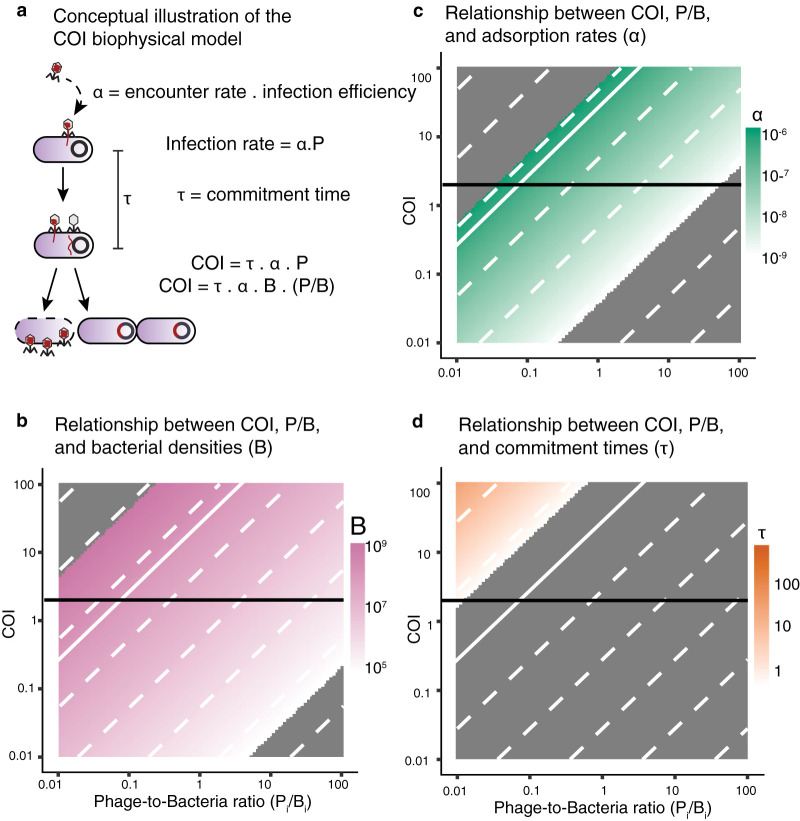FIG 1.
Relationship between number of (co)infections and phage-to-bacterium ratios. (a) Illustration of the derivation and parameter description for the biophysical (co)infection (COI) model, equation 1. COI was defined as the average number of phages infecting a cell within the commitment time (τ). COI = 1 means one phage infection. COI = 2 means two phage infections. (b to d) Relationship between COI and phage-to-bacterium ratios as a function of bacterial abundances (b), adsorption rates (c), and lysogenic commitment times (d). Panels b to d are contour plots of the quantitative outputs of the dependencies from equation 1. The color gradients cover the environmental ranges of values for each of these parameters: bacterial concentrations (pink), adsorption rates (green), and lysogenic commitment times (orange). (b to d) The dashed white lines indicate constant values of the parameters in the gradient scale. The gray areas correspond to values beyond the environmental ranges of bacterial concentrations, adsorption rates, and commitment times obtained from the meta-analysis of marine and gut ecosystems. The horizontal black line indicates COI = 2, that is, two average phage infections within the commitment time (τ). The solid white line indicates the median values for the bacterial concentration (B0), adsorption rates (α0), and lysogenic commitment time (τ0) for lambda in laboratory experiments.

